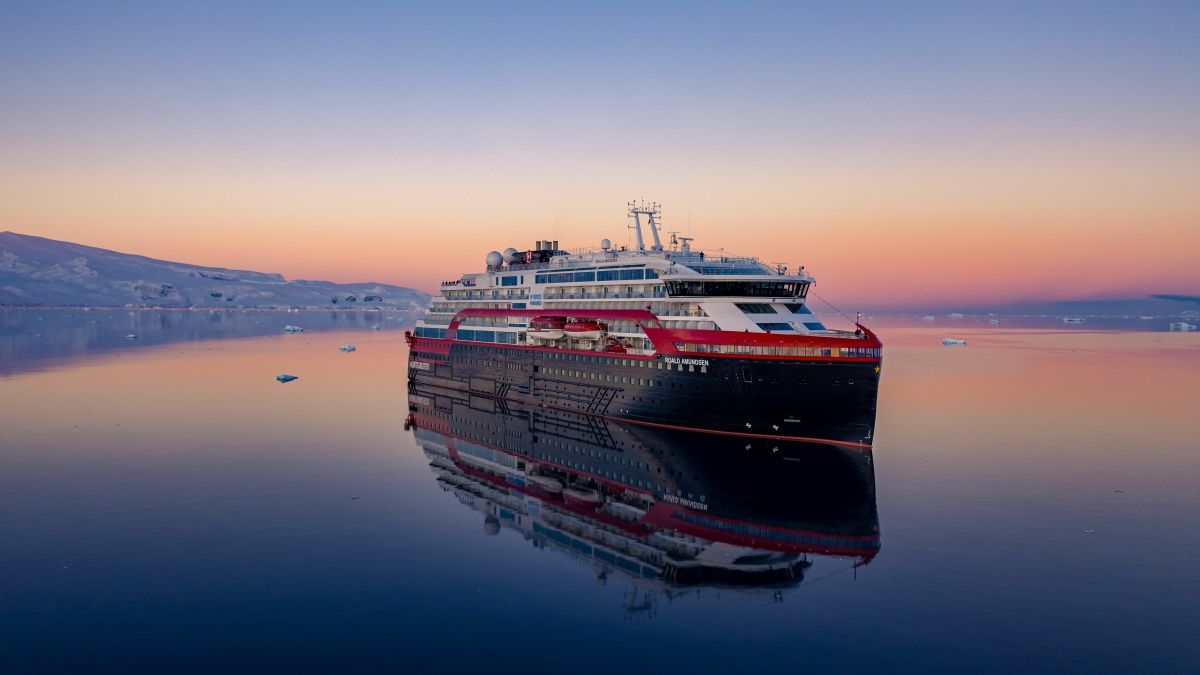Why there’s never been a better time to explore Antarctica
Wildlife watching, snowshoeing and overnight camping are among the things you can do on a Hurtigruten Expeditions cruise.

Antarctica has, for many people, always been one of those ‘bucket list’ destinations, but who knew there would be so much to see on a frozen continent inhabited primarily by scientists?
Part of Antarctica’s appeal is the sheer remoteness. It’s one of those places capable of providing a heightened appreciation for nature as unlike other tourism destinations, there certainly won’t be crowds to deal with.
Your sense of adventure can really be maximised with some of the possibilities available on an exploration of the Antarctic peninsula with Hurtigruten Expeditions, a Norwegian expedition line which has been navigating polar waters for more than 100 years.

And for a continent so remote, this other Great Southern Land is surprisingly accessible (with the right experts at hand), with complete travel packages providing outstanding value for money.
How do you even set foot on Antarctica?
Fully inclusive itineraries with Hurtigruten make the experience particularly easy and start with the company arranging your flights from Australia to South America, likely via Santiago or Buenos Aires.

Hurtigruten sails to Antarctica from Punta Arenas in Chile but it’s also possible to depart from the more established city of Ushuaia, just across the Beagle Channel in Argentina and colloquially known as the ‘End of the World’.
Expeditions run between October and March, as Antarctica is virtually inaccessible during winter. Departures in October and November are generally the best prices and ideal times to see penguins. December through February are the warmest months and are your best chance for whale watching and seeing seal pups.

A modern and sustainable fleet
Hurtigruten explores the frozen world each season with two state-of-the-art vessels, the MS Roald Amundsen and her sister ship, the MS Fridtjof Nansen.
These hybrid vessels are powered by pure electricity with a backup diesel engine, to reduce fuel consumption and leave one of the lowest CO2 footprints in the region.
Both ships feature three restaurants; an Explorer Lounge where you can admire the views through floor-to-ceiling windows; a library, outdoor and indoor observation deck; an outdoors large hot tub, and a fitness centre with spa and sauna.
And as captivating as the views are, Antarctica is an equally intriguing land with plenty to share and to satisfy an inquisitive mind, you’ll want to visit the Science Centre.

Here you’ll find an array of interactive technology and a variety of scientific equipment to help you learn all about the continent. The Science Centre hosts a schedule of informative lectures about where you’ve just visited or are yet to go, and you can meet your Expedition Team comprising of seasoned leaders and experts at workshops on topics such as polar photography and biology.
A sense of true wilderness
Camping overnight on the Antarctic mainland is a unique immersion which forms part of many Hurtigruten expeditions.

Leaving the ship after dinner, campers head ashore to set up their tent and other gear supplied by Hurtigruten including super-warm bivy bags.
Before bed, campers may get a chance to see some penguin colonies while others can opt to stay at camp. It’s an opportunity to relate to the explorations of legendary figures from Antarctic history including Amundsen, Scott and Nordenskjold, who ventured to the South Pole more than 100 years ago.
After your night under the stars, the camp is disassembled, and the ship’s Zodiac boats return to pick you up. Back onboard the ship, you’ll enjoy a special breakfast with a debrief and a certificate of achievement marking a night that won’t be forgotten in a hurry.
Hurtigruten’s 15-day ‘All-Inclusive Highlights of Antarctica’ starts from $11,990 per person including flights from Australia. The single price takes care of all your meals, transfers between airports and hotels, all activities during the expedition and access to equipment including boots, poles and other gear to use during escorted landings.

